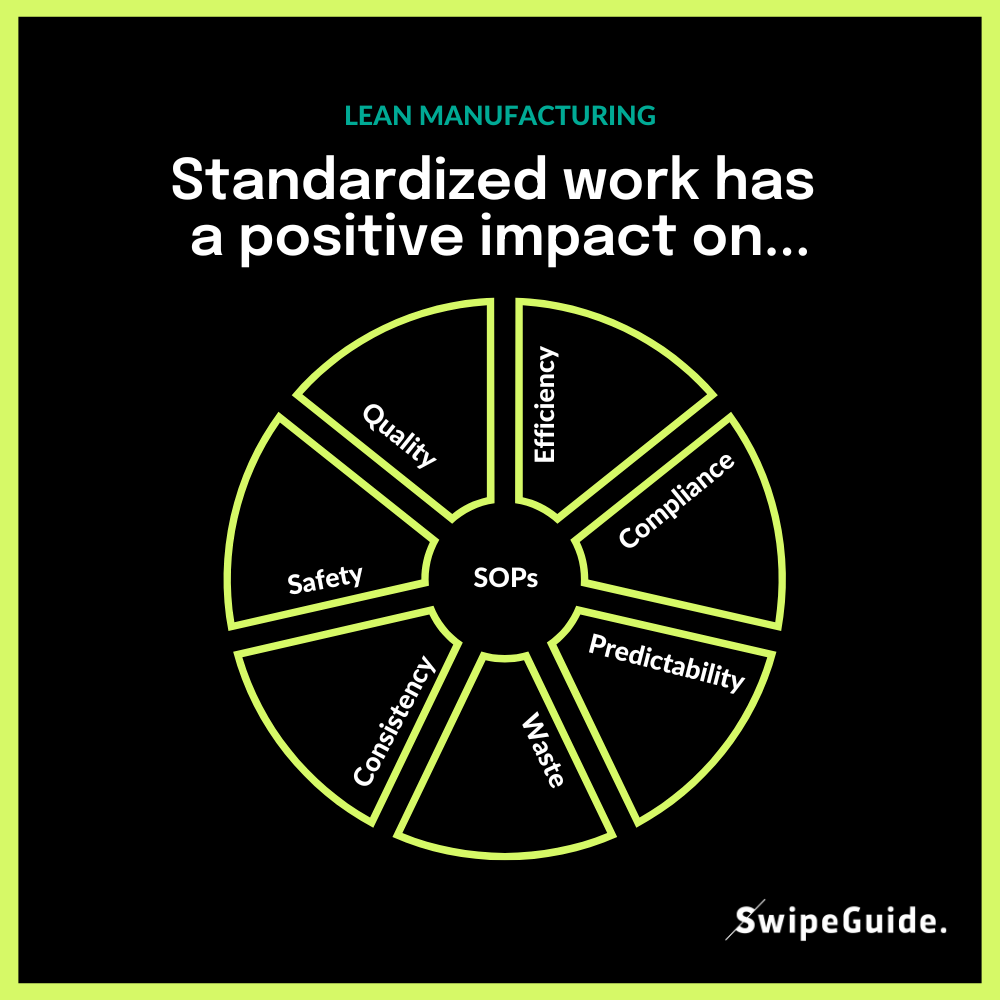Lean manufacturing depends on standardized work for so many things.
In fact, most things would be much harder without SOPs to help you out.
Here are 7 reasons manufacturers should thank standardized work:
 Let's zoom in on 4 of these including some real-life examples from our customers:
Let's zoom in on 4 of these including some real-life examples from our customers:
1. Reduce waste.
Standardized work prevents production errors and other types of manufacturing waste.
- Standardized work lets your team know exactly how to execute the plan, no matter who, no matter what.
- Example: For instance, we have seen can-coding errors at a large beer manufacturer go down by 67%, simply by having clear and accessible standardized work in place.
Changeover time is a very clear example of how operational efficiency can be enhanced with standardized work. Changeover time is the time it takes employees to transition from using one machine or completing one process to using or starting up another.
- Example: a large pharmaceutical company, averaged 31 minutes of changeover time for the different manufacturing processes in their plants.
- With digitized and standardized work, they were able to save 4 minutes during each changeover. This adds up to several hundred thousand dollars in savings per year.
3. Consistency.
In a lean factory, there is little room for quality deviations. Consistency is king.
- A product with a defect is a product recalled or returned, incurring the company costs and waste.
- If you don't have standardized work in place, many experts say it's virtually impossible to achieve your product quality and consistency goals.
- Example: Before digitizing their quality control checklists, employees at a large meat processing plant were doing 250 audit and operational checklists per month on paper. By digitizing this process and following a standard set of instructions, they are now able to do over 1,000 checks in the same period of time. They now get critical signals from the shop floor instantly when they identify a deviation, exception or abnormality.

4. Safety.
Mistakes often happen when you're not 100% sure how to perform a task. That's where standardized work can have a huge impact on safety.
- The majority of errors can be prevented from happening if people have easy access to the right information at the moment of need.
- Make sure to audit and update your standardized work regularly.
- Check that standardized work is easily accessible in the flow of work to make sure people actually use the instructions.
- Improve safety culture by providing clear safety checklists at the start of every shift.
Learn more about standardized work, SOPs and lean manufacturing:
👉 Digital Kaizen SOPs to Standardize and Continuously Improve.
👉 Introduction to Impactful 5S Standard Operating Procedures.
👉 Standard Work = Processes + Procedures + Work Instructions.








